Data Science and Machine Learning Internship ...
- 22k Enrolled Learners
- Weekend/Weekday
- Live Class
Data Science and Machine Learning are the most in-demand technologies of the era. This demand has pushed everyone to learn the different libraries and packages to implement Data Science and Machine Learning. This blog post will focus on the Python libraries for Data Science and Machine Learning. These are the libraries you should know to master the two most hyped skills in the market.
To get in-depth knowledge of Artificial Intelligence and Machine Learning, you can enroll for live Machine Learning Engineer Course by Edureka with 24/7 support and lifetime access.
Here’s a list of topics that will be covered in this blog:
When I started my research on Data Science and Machine Learning, there was always this question that bothered me the most! What led to the buzz around Machine Learning and Data Science?
This buzz has a lot to do with the amount of data that we’re generating. Data is the fuel needed to drive Machine Learning models and since we’re in the era of Big Data it is clear why Data Science is considered the most promising job role of the era!

Formally speaking, this is how Data Science and Machine Learning is defined:
Data Science is the process of extracting useful information from data in order to solve real-world problems.
Machine Learning is the process of making a machine learn how to solve problems by feeding it lots of data.
These two domains are heavily interconnected. Machine Learning is a part of Data Science that makes use of Machine Learning algorithms and other statistical techniques to understand how data is affecting and growing a business.
To learn more about Data Science and Machine Learning you can go through the following blogs:
Now let’s understand where Python libraries fit into Data Science and Machine Learning.
Python is ranked at number 1 for the most popular programming language used to implement Machine Learning and Data Science. Let’s understand why so many Data Scientists and Machine Learning Engineers prefer Python over any other programming language.
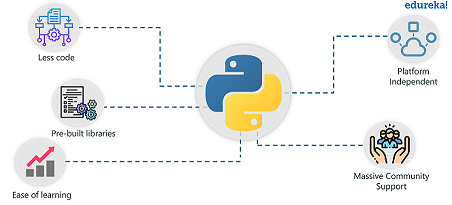
Check out this Artificial Intelligence Course by Edureka to upgrade your AI skills to the next level.
Now that you know why Python is considered to be one of the best programming languages for Data Science and Machine Learning, let’s understand the different Python libraries for Data Science and Machine Learning.
The single most important reason for the popularity of Python in the field of AI and Machine Learning is the fact that Python provides 1000s of inbuilt libraries that have in-built functions and methods to easily carry out data analysis, processing, wrangling, modeling and so on. In the below section we’ll discuss the Data Science and Machine Learning libraries for the following tasks:
Statistics is one of the most basic fundamentals of Data Science and Machine Learning. All Machine Learning and Deep Learning algorithms, techniques, etc are built on the basic principles and concepts of Statistics.
To learn more about Statistics for Data Science, you can go through the following blogs:

Python comes with tons of libraries for the sole purpose of statistical analysis. In this ‘Python libraries for Data Science and Machine Learning’ blog, we’ll be focusing on the top statistical packages that provide in-built functions to perform the most complex statistical computations.
Here’s a list of the top Python libraries for statistical analysis:
NumPy or Numerical Python is one of the most commonly used Python libraries. The main feature of this library is its support for multi-dimensional arrays for mathematical and logical operations. Functions provided by NumPy can be used for indexing, sorting, reshaping and conveying images and sound waves as an array of real numbers in multi-dimension.
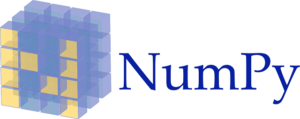
Here’s a list of features of NumPy:
SciPy
Built on top of NumPy, the SciPy library is a collective of sub-packages which help in solving the most basic problems related to statistical analysis. SciPy library is used to process the array elements defined using the NumPy library, so it is often used to compute mathematical equations that cannot be done using NumPy.

Here’s a list of features of SciPy:
Pandas is another important statistical library mainly used in a wide range of fields including, statistics, finance, economics, data analysis and so on. The library relies on the NumPy array for the purpose of processing pandas data objects. NumPy, Pandas, and SciPy are heavily dependent on each other for performing scientific computations, data manipulation and so on.
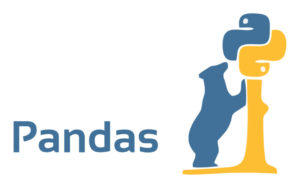 I’m often asked to choose the best among Pandas, NumPy and SciPy, however, I prefer using all of them because they are heavily dependent on each other. Pandas is one of the best libraries for processing huge chunks of data, whereas NumPy has excellent support for multi-dimensional arrays and Scipy, on the other hand, provides a set of sub-packages that perform a majority of the statistical analysis tasks.
I’m often asked to choose the best among Pandas, NumPy and SciPy, however, I prefer using all of them because they are heavily dependent on each other. Pandas is one of the best libraries for processing huge chunks of data, whereas NumPy has excellent support for multi-dimensional arrays and Scipy, on the other hand, provides a set of sub-packages that perform a majority of the statistical analysis tasks.
Here’s a list of features of Pandas:
Built on top of NumPy and SciPy, the StatsModels Python package is the best for creating statistical models, data handling and model evaluation. Along with using NumPy arrays and scientific models from SciPy library, it also integrates with Pandas for effective data handling. This library is famously known for statistical computations, statistical testing, and data exploration.
Here’s a list of features of StatsModels:
So these were the most commonly used and the most effective Python libraries for statistical analysis. Now let’s get to the data visualization part in Data Science and Machine Learning.
A picture speaks more than a thousand words. We’ve all heard of this quote in terms of art, however, it also holds true for Data Science and Machine Learning. Reputed Data Scientists and Machine Learning Engineers know the power of data visualization, that’s why Python provides tons of libraries for the sole purpose of visualization.
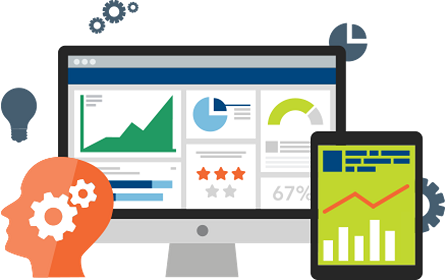
Data Visualization is all about expressing the key insights from data, effectively through graphical representations. It includes the implementation of graphs, charts, mind maps, heat-maps, histograms, density plots, etc, to study the correlations between various data variables.
In this blog, we’ll be focusing on the best Python data visualization packages that provide in-built functions to study the dependencies between various data features.
Here’s a list of the top Python libraries for data visualization:
Matplotlib is the most basic data visualization package in Python. It provides support for a wide variety of graphs such as histograms, bar charts, power spectra, error charts, and so on. It is a 2 Dimensional graphical library which produces clear and concise graphs that are essential for Exploratory Data Analysis (EDA).
 Here’s a list of features of Matplotlib:
Here’s a list of features of Matplotlib:
The Matplotlib library forms the base of the Seaborn library. In comparison to Matplotlib, Seaborn can be used to create more appealing and descriptive statistical graphs. Along with extensive supports for data visualization, Seaborn also comes with an inbuilt data set oriented API for studying the relationships between multiple variables.

Here’s a list of features of Seaborn:
Ploty is one of the most well know graphical Python libraries. It provides interactive graphs for understanding the dependencies between target and predictor variables. It can be used to analyze and visualize statistical, financial, commerce and scientific data to produce clear and concise graphs, sub-plots, heatmaps, 3D charts and so on.
 Here’s a list of features that makes Ploty one of the best visualization libraries:
Here’s a list of features that makes Ploty one of the best visualization libraries:
One of the most interactive libraries in Python, Bokeh can be used to build descriptive graphical representations for web browsers. It can easily process humungous datasets and build versatile graphs that help in performing extensive EDA. Bokeh provides the most well-defined functionality to build interactive plots, dashboards, and data applications.
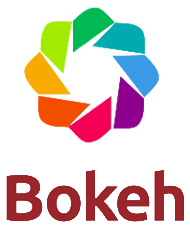
Here’s a list of features of Bokeh:
So these were the most useful Python libraries for data visualization. Now let’s discuss the top Python libraries for implementing the whole Machine Learning process.
Creating Machine Learning models that can accurately predict the outcome or solve a certain problem is the most important part of any Data Science project.
Implementing Machine Learning, Deep Learning, etc, involves coding 1000s of lines of code and this can become more cumbersome when you want to create models that solve complex problems through Neural Networks. But thankfully we don’t have to code any algorithms because Python comes with several packages just for the purpose of implementing Machine Learning techniques and algorithms.
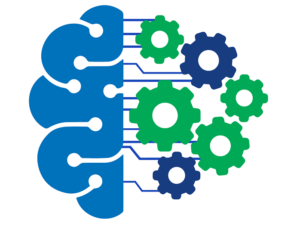
In this blog, we’ll be focusing on the top Machine Learning packages that provide in-built functions to implement all the Machine Learning algorithms.
Here’s a list of the top Python libraries for Machine Learning:
One of the most useful Python libraries, Scikit-learn is the best library for data modeling and model evaluation. It comes with tons and tons of functions for the sole purpose of creating a model. It contains all the Supervised and Unsupervised Machine Learning algorithms and it also comes with well-defined functions for Ensemble Learning and Boosting Machine Learning.
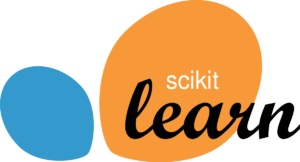 Here’s a list of features of Scikit-learn:
Here’s a list of features of Scikit-learn:
XGBoost which stands for Extreme Gradient Boosting is one of the best Python packages for performing Boosting Machine Learning. Libraries such as LightGBM and CatBoost are also equally equipped with well-defined functions and methods. This library is built mainly for the purpose of implementing gradient boosting machines which are used to improve the performance and accuracy of Machine Learning Models.

Here are some of its key features:
ELI5 is another Python library that is mainly focused on improving the performance of Machine Learning models. This library is relatively new and is usually used alongside the XGBoost, LightGBM, CatBoost and so on to boost the accuracy of Machine Learning models.
Here are some of its key features:
The biggest advancements in Machine Learning and Artificial Intelligence is been through Deep Learning. With the introduction to Deep Learning, it is now possible to build complex models and process humungous data sets. Thankfully, Python provides the best Deep Learning packages that help in building effective Neural Networks.
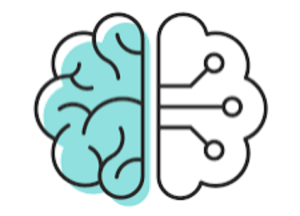
In this blog, we’ll be focusing on the top Deep Learning packages that provide in-built functions to implement convoluted Neural Networks.
Here’s a list of the top Python libraries for Deep Learning:
One of the best Python libraries for Deep Learning, TensorFlow is an open-source library for dataflow programming across a range of tasks. It is a symbolic math library that is used for building strong and precise neural networks. It provides an intuitive multiplatform programming interface which is highly-scalable over a vast domain of fields.
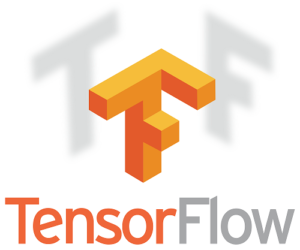
Here are some key features of TensorFlow:
Pytorch is an open-source, Python-based scientific computing package that is used to implement Deep Learning techniques and Neural Networks on large datasets. This library is actively used by Facebook to develop neural networks that help in various tasks such as face recognition and auto-tagging.

Here are some key features of Pytorch:
Keras is considered as one of the best Deep Learning libraries in Python. It provides full support for building, analyzing, evaluating and improving Neural Networks. Keras is built on top of Theano and TensorFlow Python libraries which provides additional features to build complex and large-scale Deep Learning models.
 Here are some key features of Keras:
Here are some key features of Keras:
Python Libraries For Natural Language Processing
Have you ever wondered how Google so aptly predicts what you’re searching for? The technology behind Alexa, Siri, and other Chatbots is Natural Language Processing. NLP has played a huge role in designing AI-based systems that help in describing the interaction between human language and computers.
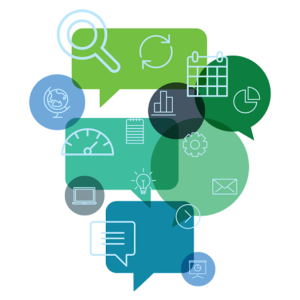
In this blog, we’ll be focusing on the top Natural Language Processing packages that provide in-built functions to implement high-level AI-based systems.
Here’s a list of the top Python libraries for Natural Language Processing:
NLTK is considered to be the best Python package for analyzing human language and behavior. Preferred by most of the Data Scientists, the NLTK library provides easy-to-use interfaces containing over 50 corpora and lexical resources that help in describing human interactions and building AI-Based systems such as recommendation engines.
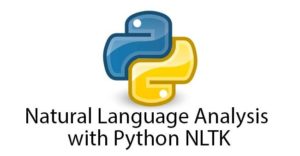
Here are some key features of the NLTK library:
spaCy is a free, open-source Python library for implementing advanced Natural Language Processing (NLP) techniques. When you’re working with a lot of text it is important that you understand the morphological meaning of the text and how it can be classified to understand human language. These tasks can be easily achieved through spaCY.
 Here are some key features of the spaCY library:
Here are some key features of the spaCY library:
Gensim is another open-source Python package modeled to extract semantic topics from large documents and texts to process, analyze and predict human behavior through statistical models and linguistic computations. It has the capability to process humungous data, irrespective of whether the data is raw and unstructured.

Here are some key features of Genism:
Now that you know the top Python libraries for Data Science and Machine Learning, I’m sure you’re curious to learn more. Here are a few blogs that will help you get started:
Edureka has a specially curated Data Science Training Course that helps you gain expertise in Machine Learning Algorithms like K-Means Clustering, Decision Trees, Random Forest, and Naive Bayes. You’ll learn the concepts of Statistics, Time Series, Text Mining and an introduction to Deep Learning as well. You’ll solve real-life case studies on Media, Healthcare, Social Media, Aviation, HR. New batches for this course are starting soon!!
Related Post Methods for detecting and preventing clickjacking with JavaScript
Also, To get in-depth knowledge on Data Science and the various Machine Learning Algorithms, you can enroll for live Data Science with Python Course by Edureka with 24/7 support and lifetime access.
Related Post:
 Thank you for registering Join Edureka Meetup community for 100+ Free Webinars each month JOIN MEETUP GROUP
Thank you for registering Join Edureka Meetup community for 100+ Free Webinars each month JOIN MEETUP GROUPedureka.co